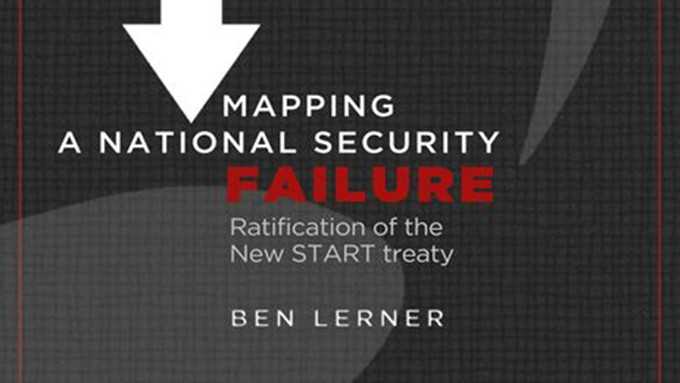Mapping a National Security Failure: Ratification of the New START Treaty

Thomas P. D’Agostino, Director of the National Nuclear Security Administration, would later add:
Over the next decade, the Obama administration has proposed investing more than $85 billion to modernize the nuclear stockpile, recapitalize the infrastructure that supports it and reinvigorate the science and technology at the core of our stockpile stewardship efforts.
Having worked on NNSA budget issues through the administrations of three presidents representing both parties, I can say with confidence that this is the most robust, sustained commitment to modernizing our nuclear deterrent since the end of the Cold War.[144]
Significantly, Senators Kyl and Corker later circulated a memorandum to their Senate colleagues, taking a different view of the Obama administration’s modernization plans, both the original and updated versions.
In commenting on the original 1251 Plan, Kyl and Corker noted:
..most of that $80 billion is not directed at modernization activities called for in the [Nuclear Posture Review]—it is mostly consumed in ‘keeping the lights on’ at the laboratories and plants, including safety, security, facility upkeep (which is difficult on very old facilities that would have been replaced long ago in the private sector), and routine warhead maintenance.[145]
Kyl and Corker would go on to assert that although the updated 1251 Plan had addressed some of their concerns, others remained, including lingering questions about funding for two key nuclear production facilities, as well as the administration’s intentions with respect to nuclear stockpile production:
…the 1251 update made clear that NNSA will not restore a production capability adequate to maintain our current stockpile levels (declassified as 5,113 weapons total), and instead allow up to 1,500 warheads to be retired or held with no maintenance unless funding increases are sought and obtained. Failing to maintain hedge weapons will increase the risk that the U.S. cannot respond to a problem in our aging stockpile. The Administration should not engage in further cuts to our deployed or non-deployed stockpile without first determining if such cuts are in our national security interest and then obtaining corresponding reductions in other nations’ nuclear weapons stockpiles, such as Russia’s large stockpile of weapons not limited by New START (e.g., its tactical nuclear weapons).”[146] (Emphasis in original)
Kyl and Corker also added, on the modernization of strategic delivery systems:
The 1251 update deals not only with our nuclear weapons, but the delivery systems that are part of our TRIAD. The update indicates somewhat clearer intent by the Administration to pursue a follow-on heavy bomber (though not specifically nuclear) and air-launched cruise missile (ALCM), though development costs beyond FY 2015 are yet to be determined. While the update notes that estimated costs for a follow-on bomber for FY 2011 through FY 2015 are $1.7 billion, there are still no costs or funding commitments beyond FY 2015. It is the same for the ALCM: $800 million is programmed over the FYDP, but no cost estimates are included beyond FY 2015. We should have a better idea of these estimated costs over the full ten-years of the 1251 plan, and know whether the Administration intends to make this new heavy bomber and ALCM nuclear capable.[147](Emphasis in original)
Decision-making for an ICBM follow-on is unlikely before FY 2015, at the completion of an ongoing analysis of alternatives. The update notes: ―While a decision on an ICBM follow-on is not needed for several years, preparatory analysis is needed and is in fact now underway. This work will consider a range of deployment options, with the objective of defining a cost-effective approach for an ICBM follow-on that supports continued reductions in U.S. nuclear weapons while promoting stable deterrence.‖ (emphasis added) We think it important to understand what the Administration intends when it suggests that a decision regarding a follow-on ICBM must be guided, in part, by whether it ―supports continued reductions” in U.S. nuclear weapons—especially since we seriously doubt it’s in our interests to pursue reductions beyond the New START treaty. One logical inference from this criterion is that a follow-on ICBM is no longer needed because the U.S. is moving to drastically lower numbers of nuclear weapons. We continue to press for a letter from the DOD confirming its commitment to follow-on nuclear-capable delivery systems.[148](Emphasis in original)
Despite Senator Corker’s co-authorship of this memo, he would ultimately cast a vote in the full Senate in favor of ratifying New START, as he did in the Senate Foreign Relations Committee several months prior. In explaining his reasons for doing so, Sen. Corker in part referenced promises obtained by key Senate appropriators and by President Obama to actually secure the funding for nuclear modernization per the 1251 Plan:
So one might say well, that’s great, but how are we going to be sure? How are we going to be sure that the appropriators actually ask for the money? Mr. President, I’d also like to enter into the record a letter that was signed on December 16 by Chairman Inouye, Dianne Feinstein, Thad Cochran and Lamar Alexander. Mr. President, that letter says to the president [Obama] that they will ask for the moneys necessary to modernize our nuclear arsenal, and that they agree to ask for that money as part of their appropriations bill.
So then you might say well, what about the president? Will the president actually in his budget ask Congress to ask for that money? I’d like to ask unanimous consent to have a letter from the president of the United States on December 20 to the appropriators saying that he, in fact, would ask for those funds in the budget that he puts forth in the next few months. I would like unanimous consent for this to be entered into the record.[149]
- Trump’s Election Was a Win in the Fight to Keep Gitmo Open - January 4, 2017
- NDAA and the Counter-Drone Challenge - December 23, 2016
- NDAA Takes On Counter-Drone Challenge - December 8, 2016
